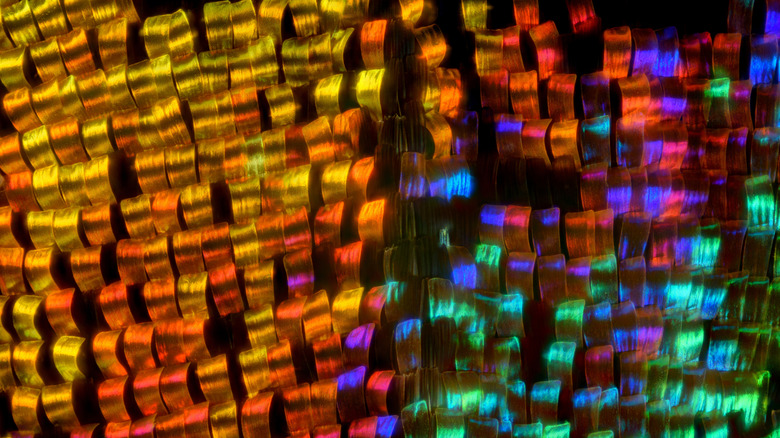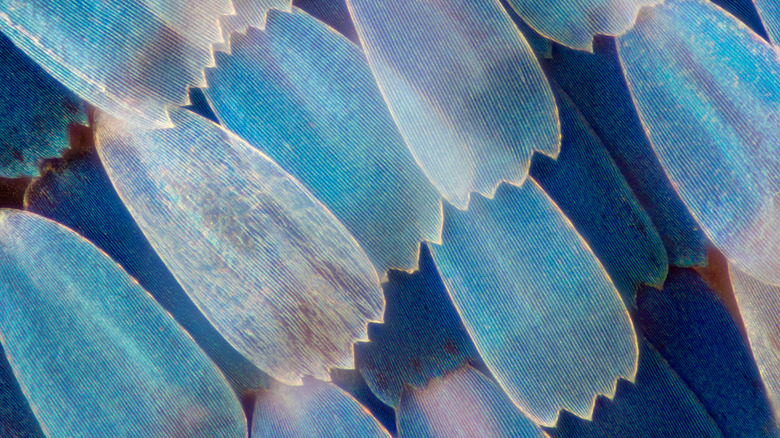You'll Never Look At Butterflies The Same After Seeing Their Wings Under A Microscope
Sometimes, looking at insects under a microscope can be nothing short of horrifying. Ants, for instance, look like orcs from some medieval fantasy series, and perhaps unsurprisingly, spiders don't look all that enticing in extreme closeup, either. Still, while there are many important scientific uses for a microscope, there remains something endlessly fascinating about getting a good close look at insects in this way — especially when they turn out to be surprisingly beautiful.
Butterflies are one example of this, or rather, butterfly wings. We think of these winged creatures as some of the more visually appealing insects out there, but it's not just that they're beautiful. Butterflies are very important for so many reasons. From pollination to their ability to indicate the health of an ecosystem, butterflies do a lot for our environment. When combined with their natural good looks, that makes butterflies a heck of a lot more appealing than most other insects.
Adding to their general appeal is the fact that looking at butterfly wings under a microscope doesn't uncover some grotesque nightmare vision. Instead, what's revealed are some of the most beautiful images you're ever likely to see produced by a microscope.
Butterfly wings looks nothing like you'd expect under a microscope
Every species of butterfly has two pairs of wings — two forewings and two hindwings — which overlap with one another and connect to the butterfly's thorax. They're made of a thin, transparent double membrane which is covered in thousands of tiny scales of varying shapes and sizes. These scales are made of chitin, which is the same material that makes up the exoskeletons of crabs and shrimp, as well as many other insects. Each scale emerges from a single cell on the surface of the wing and is extremely small, measuring roughly 1/20 of a millimeter. Butterfly wings can contain as many as 600 scales per square millimeter but this varies by species. Holding the membranes and their thousands of scales together is a system of tubular veins that emanate from the base of the wings.
The scales themselves are either pigmentary or structural, with the former containing the colors that make up the unique patterns we see on butterfly wings. These pigmentary scales can be black, red, or yellow, but when arranged alongside one another, create the illusion of other colors. Some species have semi-transparent structural scales with ridges on the surface which can cause light to refract as it passes through, breaking that light up into rainbow colors. Taken together, all these pigmentary and structural scales add up to make the beautiful patterns we see on butterfly wings. But it turns out they're just as beautiful when viewed in extreme closeup.
This delicate arrangement of scales on the membranes of butterfly wings looks disarmingly alluring under an electron microscope, revealing a remarkably intricate structure that we would otherwise never know about. The arrangement almost looks like a miniscule array of small feathers or tiny plants in ordered rows, and likely isn't what you'd expect from a closeup of butterfly wings.

